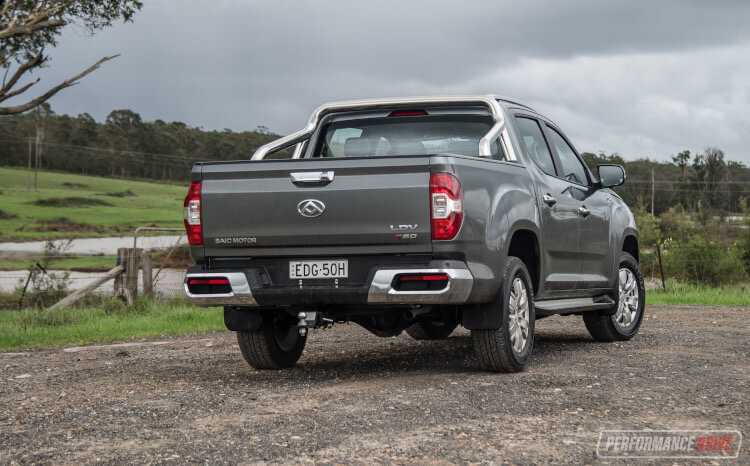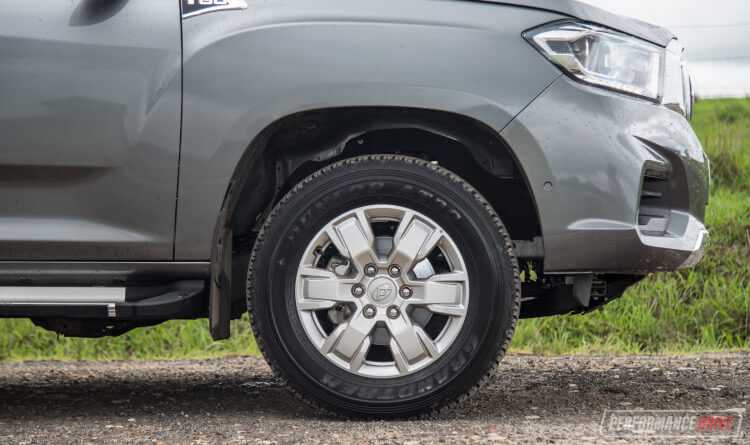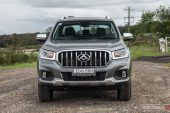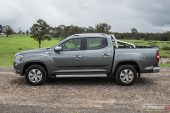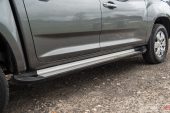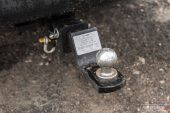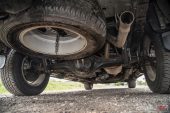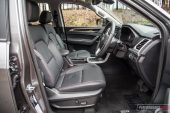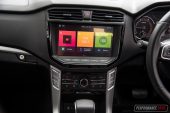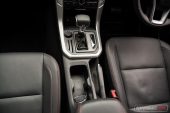Yes, it’s made in China. And yes, it’s from a brand you may not have heard of. But does that mean the LDV T60 should instantly be relegated to the rejection list? If value for money and packaging are high on your priorities, this is a very attractive proposition.
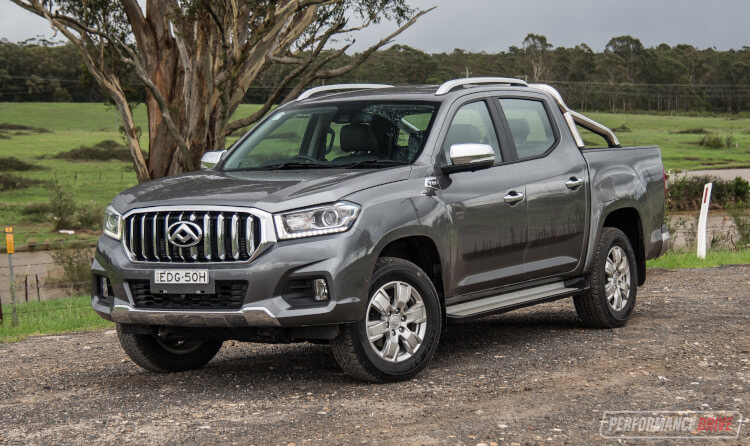
LDV as a brand can trace its roots back to the UK. It actually started as Leyland DAF Vans in 1993, manufacturing vans in Birmingham under parent company Rover and Leyland. Production ended in 2008. Nowadays the LDV name is owned by massive Chinese state-owned group, SAIC Motor, based in Shanghai. It also owns MG, Roewe (previously Rover), and holds one of the longest-running joint ventures in the industry, with VW, and another major venture with General Motors.
The T60 is based on SAIC’s own Maxus T platform and showcases a design and equipment and technology from the group. About the only element that isn’t from SAIC is the powertrain. Under the bonnet is a 2.8-litre turbo-diesel engine, which is based on a VM Motori (owned by Fiat-Chrysler) design, with a six-speed automatic built by Belgian-based Punch Powertrain, a BorgWarner transfer case and Eaton locking rear differential.
Another important factor which might be a concern for some is the level of safety. Traditionally, Chinese-made vehicles have not meet our more stringent safety standards. But you can rest assured as all variants of the T60 have been given the full five-star ANCAP safety rating. At the time of testing, the T60 received the highest score of any Chinese vehicle ever tested by ANCAP.
For the 2020 model year lineup buyers have two core variants to choose from; the Pro and the Luxe. Both are in dual-cab form only and come with part-time four-wheel drive only. Manual and automatic are available. The model we’re looking at here is the flagship Luxe with the auto. Prices start from $37,358, although if it’s sheer affordability that you want, the Pro starts from just $30,516.
2020 LDV T60 Luxe – THE SPECS
[column width=”47%” padding=”6%”]Engine: 2.8-litre turbo-diesel four-cylinder
Output: 110kW@3400rpm / 360Nm@1600-2800rpm
Transmission: Six-speed auto
Drive type: Part-time four-wheel drive, dual range
Wheels: F & R: 17×7.0, 245/65
ANCAP: Five stars
Tare weight: 2005kg
Power-to-weight: 18.22:1 (kg:kW)
Official fuel economy: 9.6L/100km
Economy during test: 9.2L/100km[/column] [column width=”47%” padding=”0″]Fuel capacity/Type: 75L/Diesel
Power efficiency: 11.46kW:L/100km
0-60km/h: 5.33 seconds*
0-100km/h: 12.73 seconds*
60-110km/h: 10.23 seconds*
1/4 mile: 18.97 seconds at 119.0km/h*
Max acceleration: 0.678g
100-0km/h braking: 3.65 seconds at 42.55 metres*
Max deceleration: -1.040g
Decibel at idle: 51*
Peak decibel at 60-100km/h: 81*
Priced from: $37,358[/column][end_columns]
* Figures as tested by PerformanceDrive on the day. Factory claims may be different
2020 LDV T60 Luxe – THE PACKAGE
There is definitely plenty of appeal to the T60’s packaging. In Luxe form it comes with everything you could want from a modern workhorse; partial leather seats with power adjustment in the front, climate control, keyless entry and start, tyre pressure monitoring, and an impressive 10-inch touch-screen media interface packed with Android Auto and Apple CarPlay, as well as Bluetooth connectivity.
Although the touch-screen is large for this class, the screen itself seems to feature a hazy cover over the top of it, perhaps for protection and durability. However, the clarity isn’t the best and at some angles and in certain light, the contents of the screen are almost impossible to see. We also find limited functionality and depth within the screen menus, although the in-built apps are fairly easy to understand.
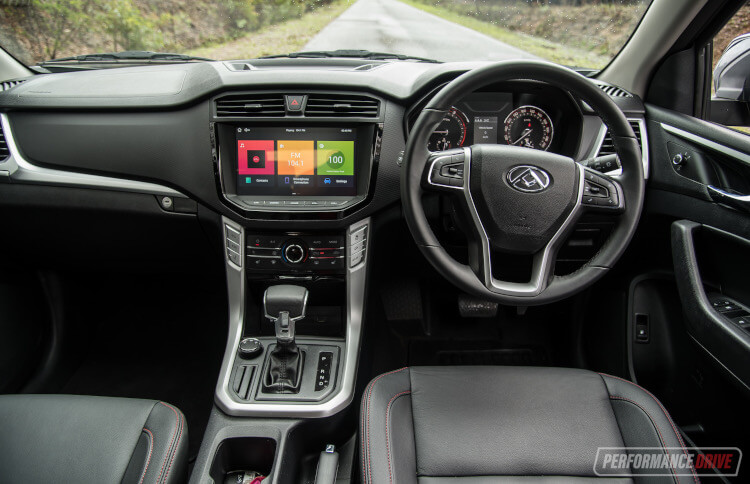
Cabin space and practicality is very good. You have plenty of storage options in the front, including a centre console box and arm rest, dual cup holders, bottle holders in the doors, and a tray for your phone and whatnot. Headroom and legroom, and general ergonomics are also satisfactory. As per many utes, the steering column is only adjustable for tilt and not reach, which is disappointing.
Rear seat accommodation is good for this class. There’s a power socket, dual cup holders from the centre arm rest, and bottle holders in the doors. Passengers are also treated to seat-back pockets on both front seats, and there’s even climate vents. Door aperture, seat height, and pillar positioning all seem well designed to us so it’s easy to get in and out of, and legroom and headroom are at or even slightly above the class average.

Right at the back is a large tub tray. It measures 1525mm long and 1510mm wide, with a depth 530mm, and 1131mm available between the wheel arches. Some tie hooks and a chrome sports bar are included on the Luxe, along with a full moulded tub-liner.
If that’s not enough space LDV is offering an optional ‘Mega Tub’. This gives the T60 the longest wheelbase and longest production tub in the class. Going for this sees an extra 315mm added to the 3155mm standard wheelbase, resulting in 275mm of added length for the tray. The tray bed length measures in at an impressive 1800mm. This, according to LDV, is enough to accommodate an upright dirt bike or a six-foot ladder within the tub area with the tailgate closed.
2020 LDV T60 Luxe – THE DRIVE
Where things do fall behind par for this class is with the drive experience. Firstly, the 2.8-litre turbo-diesel diesel is down on power and torque. At 110kW and 360Nm, pretty much all of the main rivals offer more grunt than this. To add salt to the wound, the official combined cycle fuel consumption rate of 9.6L/100km is also behind the rivals, and by a lot in some cases.
Weighing in at 2005kg (tare), and with those low output numbers, the T60 is slow. We clocked 0-100km/h in 12.73 seconds, which is one of the slowest times we’ve seen in the diesel dual-cab ute class. Obviously speed and acceleration isn’t everything, particular for a ute, but this is really slow. And we run tests with no weight in the back. Stack it up with some tools and work mates and it’d be painfully slow.
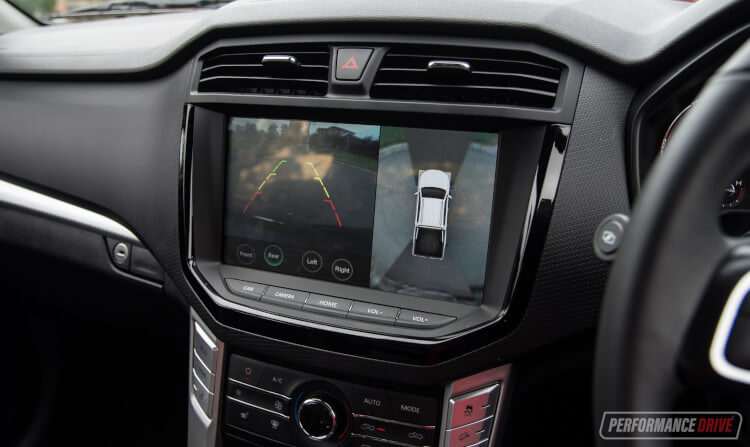
Along our usual test drive route we purposely encounter a particular strip of tarmac (around 150 metres in length, pictured below) that’s quite corrugated and with lots of patchwork on it. We hit this with every car that we review. The speed limit is 100km/h, which is great for us as we can see how different vehicles behave at a set speed over a consistent poor surface.
Compared with other dual-cab utes that we’ve driven over this particular section of road, the T60 did not perform well at all. Lightly holding the steering wheel as we usually do for this specific test (in the outside lane), this test vehicle shuddered and physically bounced out of the lane by about 50cm. It required lots of busy steering correction. Now, this scenario might not be relevant to those living in the city but for motorists in the country, where roads are usually low in quality, and for long stretches, the T60 could become troublesome.
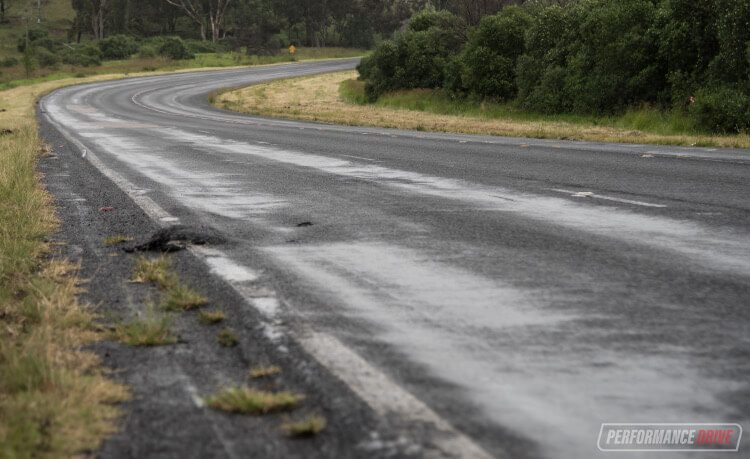
It seems to us that the dampers, which are made in China, are not up to the job of keeping the wheels firmly pressed onto the ground. There are many utes on the market at the moment that use live axle rear ends with leaf springs, just like the T60, and we have seen unsettled behaviour on these.
However, the T60’s independent MacPherson strut front end seems almost as unsettled as the rear, with noticeable bump-steer experienced on shoddy surfaces. Other utes might bounce around at the back only with the front remaining planted, while others perform even better and drive over corrugations with a similar level of composure as some passenger hatchbacks and sedans. The T60 was one of the worst we’ve tested in this specific area.
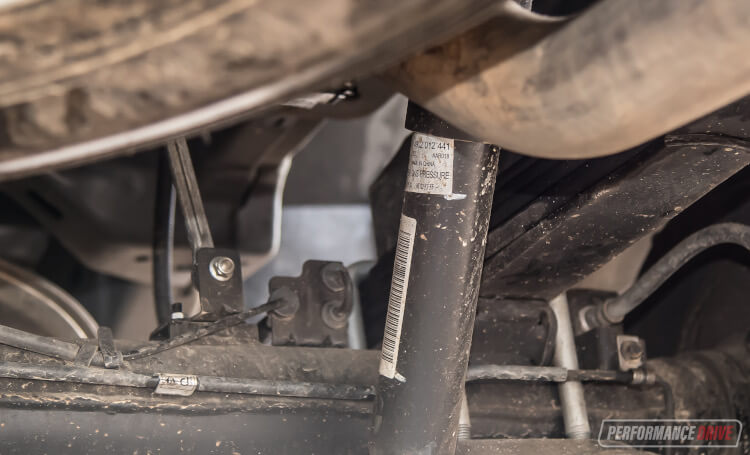
In terms of handling around corners on normal roads with decent surfaces, the T60 performs adequately and the ride comfort is respectable. The steering is precise enough for this style of vehicle, but not too touchy for those technical off-road situations. The 245/65 Dunlop AT20 tyres are a decent choice as they do feature a somewhat aggressive tread pattern for a highway terrain tyre and a strong sidewall that’s great for off-roading, but road noise and comfort are still pretty good.
Speaking of off-roading, the T60 offers 215mm of ground clearance. This doesn’t compare well to many of the rivals. The water wading depth of 500mm also doesn’t stack up well, comparatively. However, the 27-degree approach angle and 24-degree departure angle aren’t too bad. You also have high- and l0w-range to use, and a locking rear differential for when the going gets really tough.
2020 LDV T60 Luxe – THE VIDEO
2020 LDV T60 Luxe – THE VERDICT
As an affordable product and a useable dual-cab 4×4 workhorse, the T60 fulfils its purpose just fine. Compared with the veteran rivals though, there are some noticeable areas that fall behind. Things like the Chinese-made shock-absorbers and media screen software, the low engine power and torque, some of the off-road specs, and the fuel economy all need further evolving.
Give LDV a few more years experience in building and developing its vehicles for global standards and we’re sure the brand will become the next Hyundai and Kia. But for now we’d recommend you try out the competitors first unless budget is the strictest of concerns.
[column width=”47%” padding=”6%”]PROS:
– Affordable yet very well packaged
– Huge touch-screen for this class
– Practical and spacious cabin
– Looks pretty good, stylish front end
– Option ‘Mega Tub’ for class-leading tray size
– 5-year warranty
[/column] [column width=”47%” padding=”0″]CONS:
– Engine power, torque, and fuel economy behind class standards
– 215mm ground clearance, 3000kg towing, 500mm water wade depth all behind class standards
– Questionable suspension setting and stability
– Touch-screen is big but software lacks depth[/column][end_columns]
As always, if you’re thinking about buying a new car don’t forget to click here to speak with our car buying specialists.
